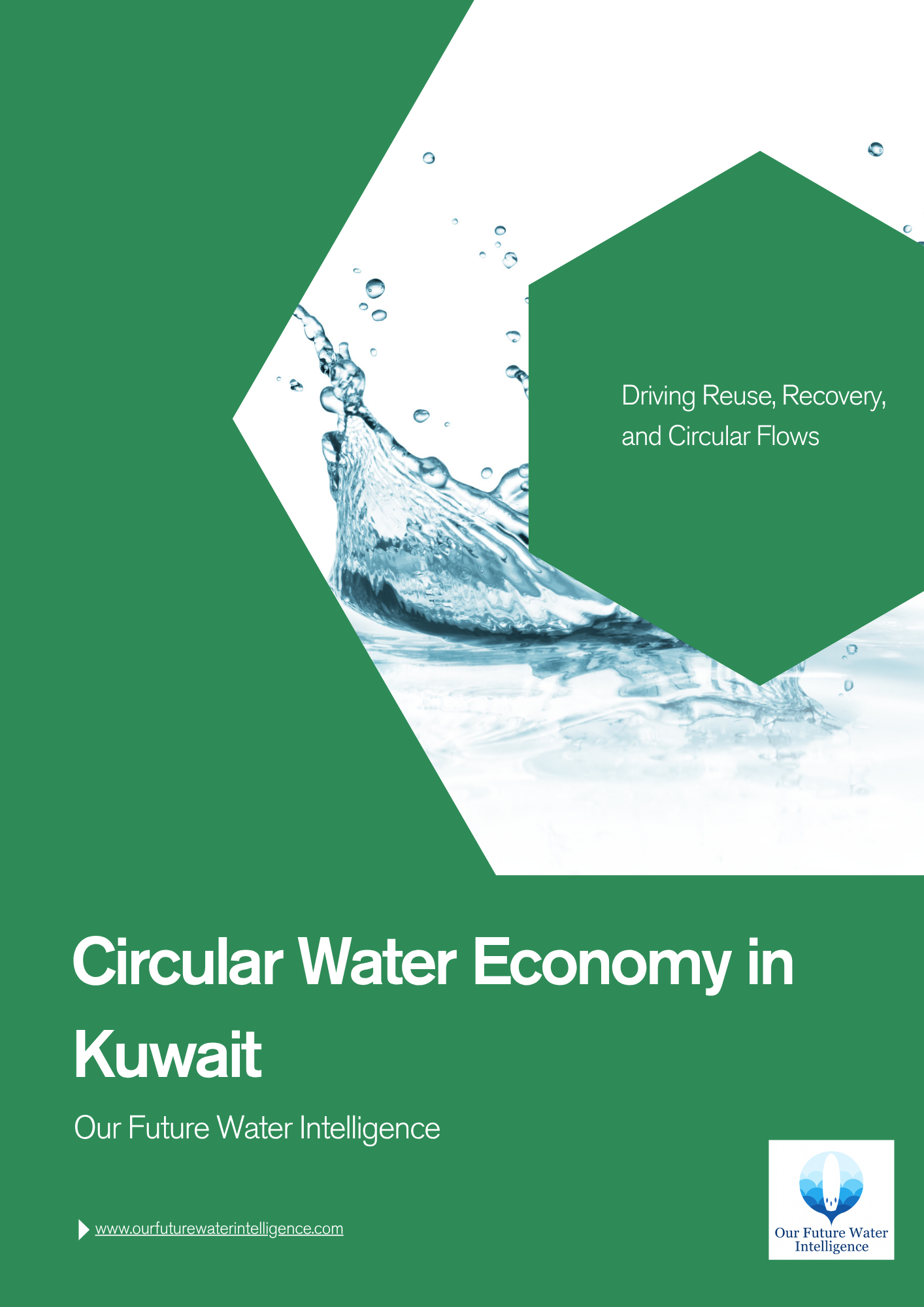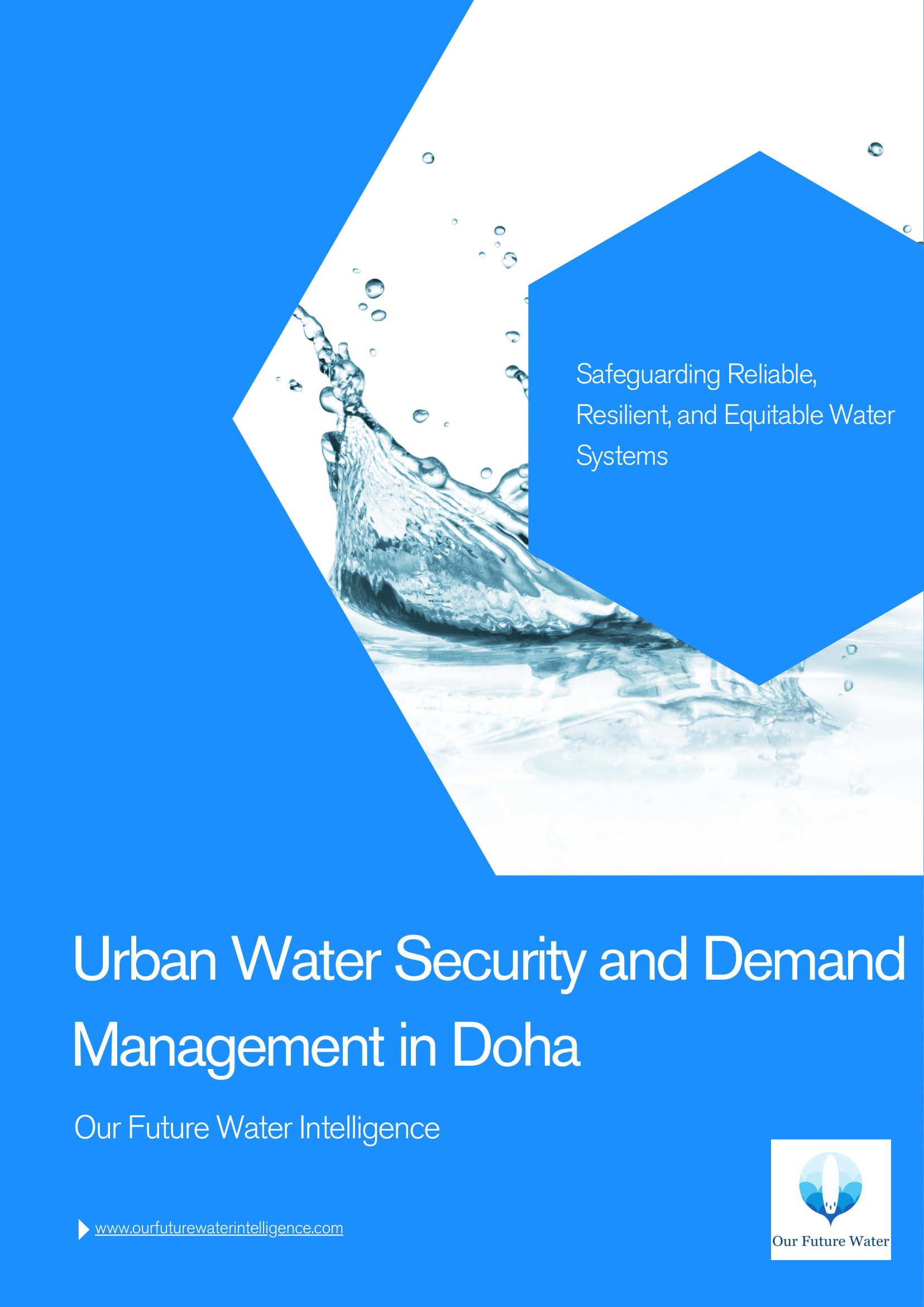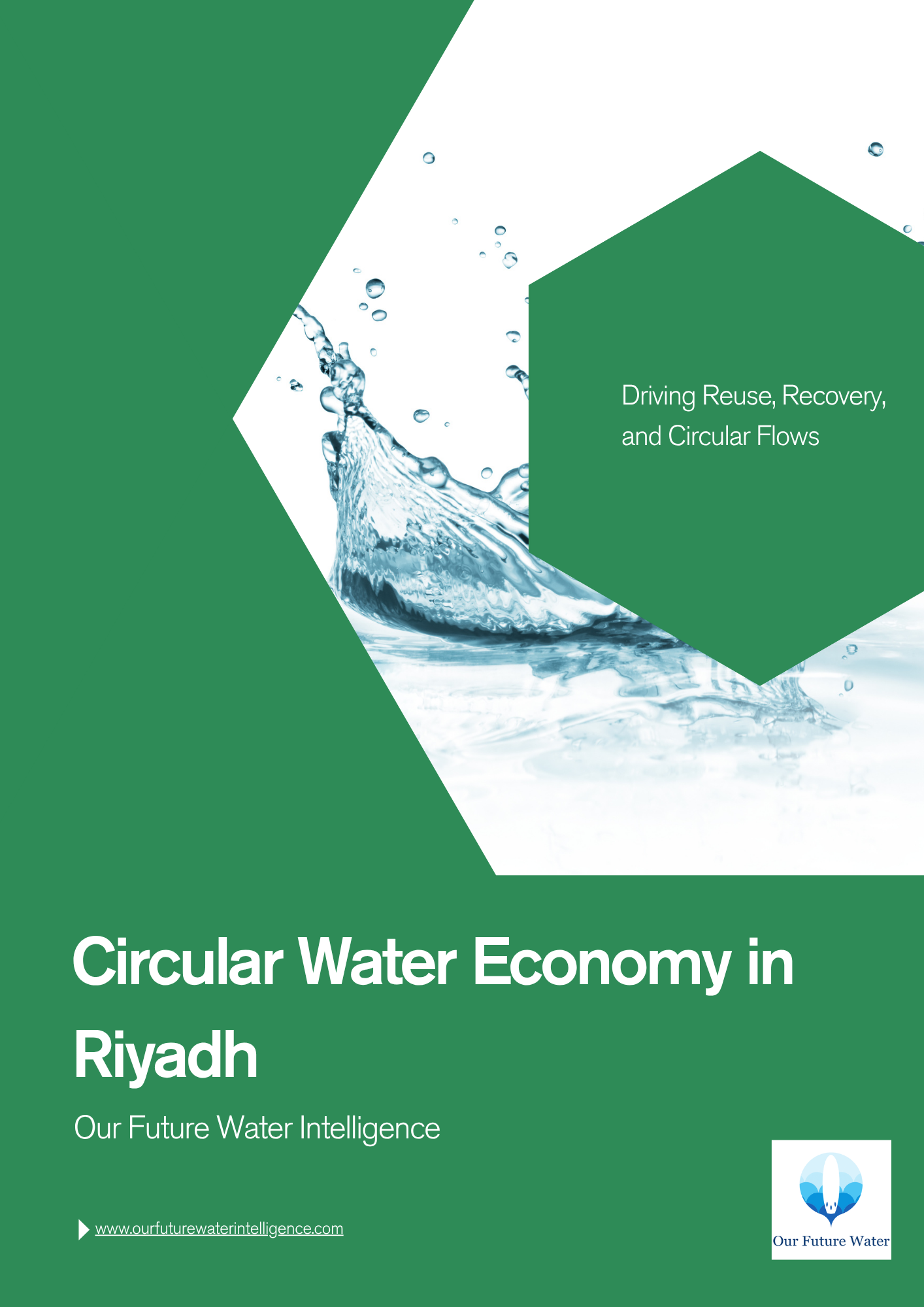Circular Water Economy in Kuwait | Advancing Smart Water Management and Resource Resilience
Circular Water Economy in Kuwait presents a focused, evidence-based analysis of how the State of Kuwait is transforming water management through circular economy principles. In one of the world’s most arid and resource-constrained settings, Kuwait is moving beyond the linear “use-and-dispose” paradigm toward a Circular Water Economy (CWE) anchored in efficiency, reuse, and digital innovation—aligned with Kuwait Vision 2035 and the National Adaptation Plan (2019–2030).
Key Insights
Understand Kuwait’s Water Realities
Ranked first globally for water stress, Kuwait depends almost entirely on non-conventional sources—49% desalinated seawater and 29% treated wastewater. Renewable freshwater availability stands below 5 m³ per capita, while average daily use reaches 447 liters per person, underpinned by government subsidies that cover 95% of production costs.
Explore the Circular Transformation
Guided by the 5Rs Framework—Reduce, Reuse, Recycle, Recover, Restore—Kuwait is reconfiguring its water system for long-term sustainability. Efficiency programs, tariff reforms, and behavioral campaigns are driving conservation, while expanding reuse and recovery options lessen dependence on costly desalination.
Examine Infrastructure Innovation
The Sulaibiya Water Reclamation Plant, the world’s largest membrane-based treatment facility, reclaims roughly 60% of national wastewater for landscaping, irrigation, and industrial use. Concurrently, stormwater capture systems at the South al-Mutlaa Mega Project and South Abdullah Al-Mubarak Reservoir enhance flood resilience and groundwater recharge capacity.
Assess Digital and Policy Reform
The Ministry of Electricity, Water and Renewable Energy (MEW) is rolling out 200,000 smart water meters and digitizing 97% of customer services, improving transparency and leak detection. Reforms in tariff structure, debt collection (recovering over KWD 500 million in one fiscal year), and public awareness embed accountability into Kuwait’s evolving governance model.
Discover Resource Recovery Opportunities
Partnerships between MEW and the Kuwait Oil Company (KOC) utilize desalination brine for enhanced oil recovery, converting waste into value. Nutrient recycling from tertiary effluent supplies fertilizers for landscaping, while new research focuses on recovering valuable minerals such as lithium and bromine from brine streams.
Evaluate Ecological Resilience
Expansion of green belts—now covering over 51% of protected terrestrial areas—improves microclimates, reduces dust storms, and supports biodiversity. Nature-based flood protection projects reinforce Kuwait’s integrated climate adaptation strategy, linking infrastructure efficiency with ecological health.
Gain Insight into Future Pathways
Kuwait’s Circular Water Economy roadmap prioritizes reducing Non-Revenue Water (NRW) to 15%, scaling reuse across all sectors, transitioning to renewable-powered desalination, and leveraging artificial intelligence for predictive water management. These measures aim to build a low-carbon, resource-secure water future aligned with national resilience goals.
Designed for policymakers, utilities, consultants, and investors, Circular Water Economy in Kuwait delivers actionable intelligence for advancing sustainable, efficient, and climate-resilient water systems in one of the world’s most water-stressed nations.




